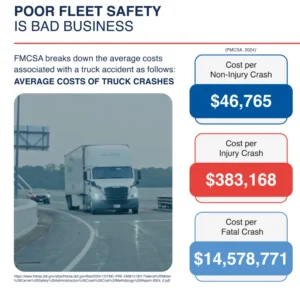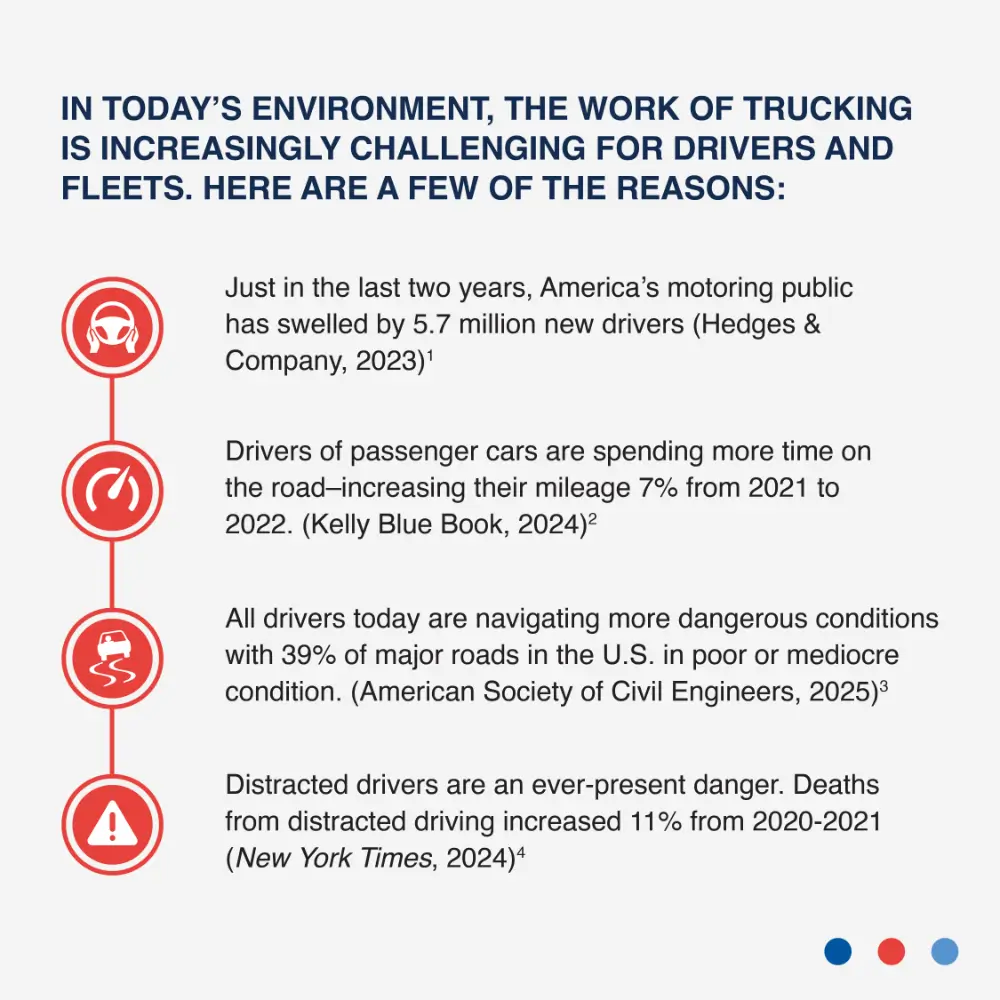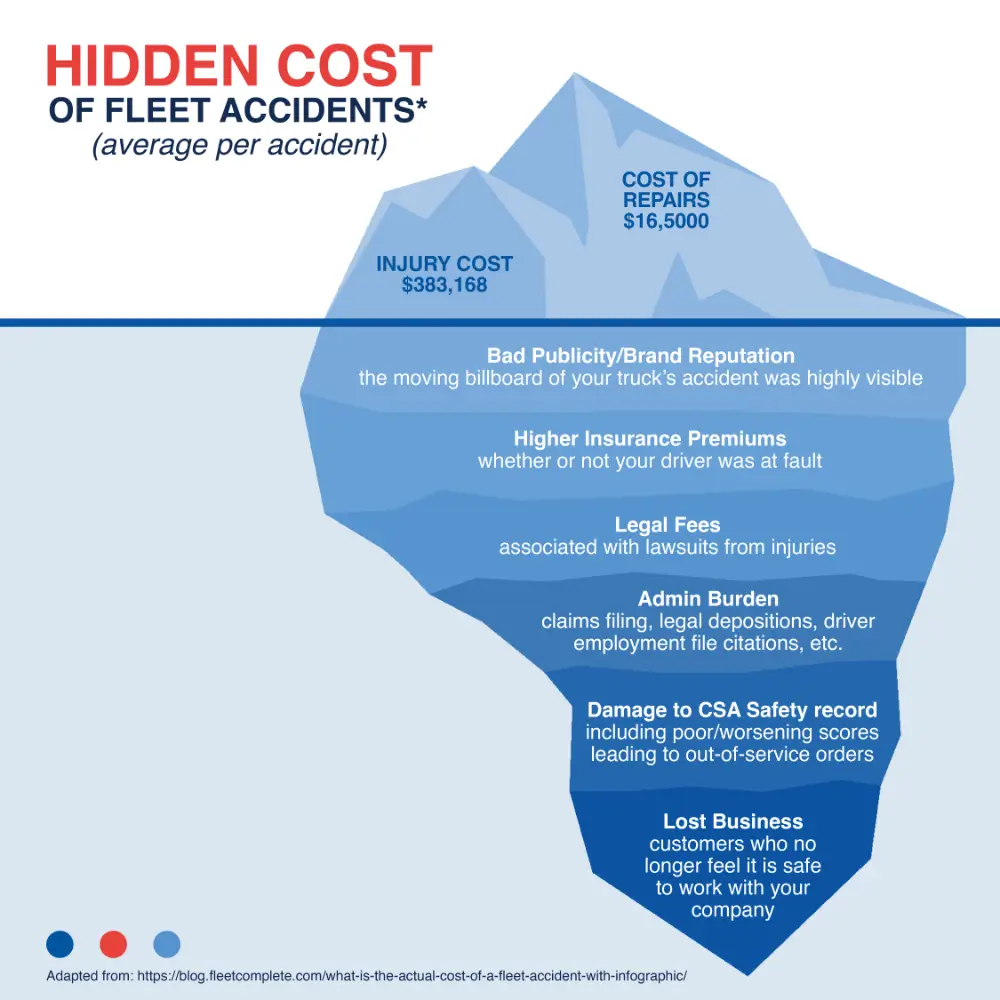The Safety Advantage (Part 1 of 4)
Why running a private fleet is no longer the safest bet
Controlling your own assets, drivers and brand out on the road seems like the ideal route for shippers who want to mitigate risks.
It’s a main reason why historically private fleets have been the dominant transportation model for decades.
Times have changed, though. Historic nuclear verdicts in truck crashes have increased the risk of running a private fleet dramatically. $16 M, $21 M, and even $108 M verdicts in truck crashes reported on by Freightwaves should make any fleet operator ask if their in-house private fleet is safe enough.
Even the biggest and best private fleets have risk
When a major retailer’s truck slammed into the back of the limousine, it ended the life of a passenger and family-man, maimed a well-known actor and created a situation no company big or small wants to find themselves in.
The driver was pulling a 28-hour shift. He was sleep deprived and couldn’t have been more sorry for his mistake. It was the same for the company, a family-brand with health and safety deeply rooted in its mission. The driver pleaded guilty to vehicular manslaughter and the company settled swiftly, paying out close to $100 million to the injured and their families.
The writing was on the wall and right there on the side of their truck. The failure in safety exacted the ultimate cost and it threatened to cost them even more if they didn’t go the full distance to make it right.
It was bad luck and bad safety management. Training, management and technology failed the retailer. And in the end, they were responsible.
America’s roads are more dangerous than ever
- Just in the last two years, America’s motoring public has swelled by 5.7 million new drivers (Hedges & Company, 2023)
- Drivers of passenger cars are spending more time on the road–increasing their mileage 7% from 2021 to 2022. (Kelly Blue Book, 2024)
- All drivers today are navigating more dangerous conditions with 39% of major roads in the U.S. in poor or mediocre condition. (American Society of Civil Engineers, 2025)
- Distracted drivers are an ever-present danger. Deaths from distracted driving increased 11% from 2020-2021 (New York Times, 2024)
The large number of often-distracted motorists driving on ill-kept roads makes for a dangerous and stressful workplace for truckers. According to the Federal Motor Carrier Safety Administration (FMCSA), there were approximately 494,000 police-reported crashes involving large trucks in 2021 of which 1% resulted in fatality and 22% resulted in injury.
There is an increasing need for supply chain risk management in fleets. It’s never been more important for private fleets to ensure they have the best safety program possible.
Safety program priorities today
- Preserve brand reputation
- Improve risk management
- Build a safety culture
- Focus on training
- Leverage technology
- Establish supply chain safety model
Safety is more than a moral imperative
Having a robust safety program is good business, especially when it comes to fleet management. No longer a ‘choice’ or ‘nice-to-have’; the bar for safety in the transportation industry is high to begin with. Federal, state, local, provincial and territory regulatory requirements and monitoring bodies continue to verify compliance, primarily through FMCSA’s Safety Measurement System (SMS) for carriers as well as a host of programs sponsored by the Commercial Vehicle Safety Alliance (CVSA) that include:
- CVSA road inspections throughout the year
- Annual International Roadcheck
- Operation Safe Driver Week
- Unannounced and scheduled CVSA Brake Safety Events
Compliance with governmental rules and regulations is the minimum requirement for private fleet operators. Safety has a direct impact on a shippers’ supply chain, business operations and costs. While some may rank safety behind revenue and expenses, those that prioritize safety show positive impacts and results.
Companies maintaining rigorous safety standards not only meet compliance, but also see a 40% increase in productivity and a marked decrease in job-related injuries, according to HR Future Magazine.
Organizations with high safety standards understand the impact safety has on costs and profits. They prioritize safety across logistics operations and all aspects of transportation. Hours of service compliance for drivers, hazmat paperwork compliance, securing permits, equipment checks and reviews are just a few of the safety priorities in transportation now.
Poor Fleet Safety Is Bad Business
FMCSA breaks down the average costs associated with a truck accident as follows:

Every crash impacts business. The potential ramifications of incidents include the loss of time and assets, insurance claims, equipment replacement and repair, customer dissatisfaction and the threat of legal action that all lead to financial loss and increased costs. When accidents happen, they are usually followed by freight claims and dispute resolution that strains relationships between shippers and carriers.
The insurance impact is a major consideration. Insurance claims for accidents may drive private fleets’ already-high premiums up, warrant cancellation or bring out-of-pocket costs for fleets with high deductibles. Furthermore, insurance providers may not handle settlements fast enough or well enough for brands who want to avoid bad publicity. The retailer mentioned previously settled with plaintiffs directly and subsequently had to fight it out with their insurers to be reimbursed.
Top 9 safety risks to private fleets
- Nuclear verdicts – Payouts in the millions of dollars strain even the largest fleets
- Brand reputation – Consumers, customers and investors view a company’s trucks, products and policies as inseparable aspects of a brand. When company trucks crash, drive unsafely or arrive late, it tarnishes the entire brand.
- Financial repercussions – After being found at fault in a fatal crash, trailer manufacturer, Wabash National’s stock sank 60% and two key agencies cut their debt rating. (Freightwaves)
- Insurance increases – Insurance premiums are one of the highest costs of operating a truck. Accidents and a poor safety record put fleets at risk of paying the maximum for policies.
- Claims and service failure – Crashes that damage freight and incidents that delay delivery can be significant. The cost to customer relationships and lost business can be even more.
- Damage to carrier safety record – Fleets’ and carriers’ Compliance, Safety and Accountability (CSA) score issued by the FMCSA determines subjectability to Department of Transportation (DOT) inspections and influences insurance ratings. A poor score can lead to out-of-service (OOS) orders in the worst cases.
- Equipment damage – Damage to tractors and trailers can reach six figures and necessitate expensive rentals to cover the lost capacity.
- Loss of a driver – Injured drivers threaten companies’ already constricted driver pools which continue to be affected by the industry-wide driver shortage.
- Fines and penalties – Failing to cease operations following an OOS order for safety violations can bring FMCSA fines exceeding $30,000. There are also stiff fines for record keeping violations or allowing OOS employees to drive. (DISA, 2024)
Inaction is the most dangerous solution
In today’s environment, fleets can’t afford to operate business as usual. A robust safety program is a necessity.
Fleets do well to explore in-house investments as well as outsourced solutions for mitigating their risks.
Learn how fleets must up their game in our next post when we share the critical role of training in ensuring fleets and drivers stay on the leading edge of safety.
Ready to learn more? Download our new whitepaper: THE SAFETY ADVANTAGE: Policies and Practices Driving Leading-Edge Fleets.
More Blogs

